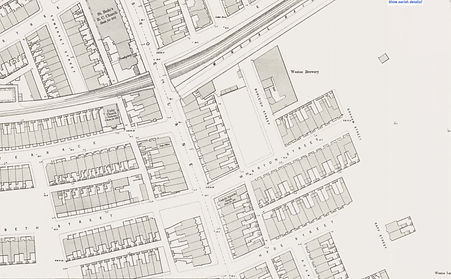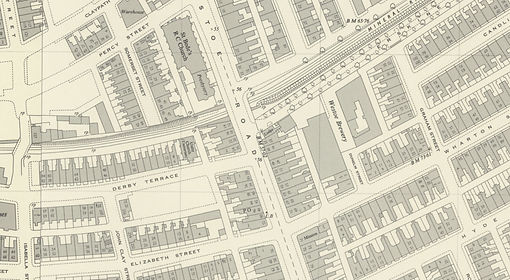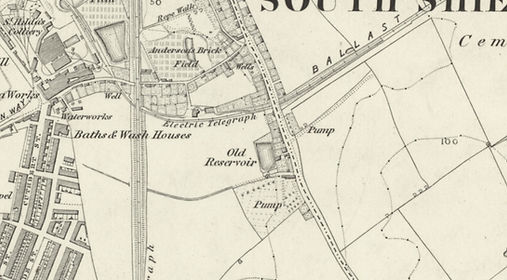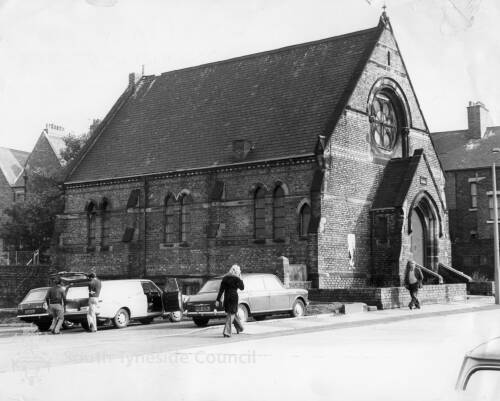
South Shields
South Shields Unitarian Church
Last Updated:
28 Jul 2025
South Shields
This is a
Church, Place of Worship
54.992922, -1.429439
Founded in
Current status is
Extant
Designer (if known):
T A Page

Now a private dwelling
This church, featuring gorgeous layers of decorative brick giving it some real texture, was the home of the South Shields' Unitarians. The Unitarians had a strong presence on Tyneside from the 1830s and were one of the more progressive and liberal protestant denominations. Some shunned traditional Anglicanism in favour of the ingrained battle for working class rights and abolitionist principles of this movement. In fact people like Locke, Newton & Dickens would be cited as Unitarians, even if not formally. The decorative flare of this building matches the spirit of Unitarianism.
It was built in 1873, some 6 years after the Unitarians established a presence at Shields. It featured the church on the ground floor with room for 250 persons, as well as a basement featuring the school room, vestry and kitchen. They were still relatively small in the area, but a place of worship was bound to attract attention.
At the consecration a certain William Henry Channing was present - an American Reverend whose family led the movement over the ocean. He was an active proponent of the women's rights movement in the 1850s and was what we would define today as a socialist, calling for social reorganisation and such. There's no wonder they were popular on the banks of the Tyne.
The man who designed this chapel was Mr T A Page, a local architect whose work was more domestic than what we'd come to expect from this construction. Dwellings and warehouses around Shields were his meat and potatoes.
Religious work continued into the 1960s. From there it was used as a community centre and a Mental Health organisation, but more recently has become a private dwelling.
Listing Description (if available)


The Ordnance Survey maps shown here depict the Westoe Road area, and the Unitarian Chapel, from the 1890s til the 1950s. We come across the gradual expansion of the towns peripheries in the 1890s maps, which is surely why the chapel was built here - cheap land on the Shields frontier in the 1870s. It found itself adjacent to the colliery line between Westoe Colliery and St Hilda's which predates the church, and nestled within the terraced developments of the 1870s and 1880s. Just down the road were also the municipal bath houses, a mission hall and the Roman Catholic School likely linked to St Bede's.
The 1950s plan shows Shields fully realised, and most recognisable to us today minus the railway. In fact there is relatively little change, though the feature of note missing is St Bede's. Only the Sunday school remains of this structure.

It's worth tracing back to the mid 19th century to understand what stood here before. The chapel site is vacant land - perhaps for pasture rather than allotments which stood on the other side of the track. The municipal bath house we mentioned earlier appears to have replaces another near Cuthbert Street. A reservoir stood here also, designated as old on these maps and potentially one of the towns early modern water supplies before the development of pumping stations at Fulwell etc.

The Unitarian Church in July 2025

The church in the 60s or 70s, on the edge of its spiritual life. Source: South Tyneside Libraries
